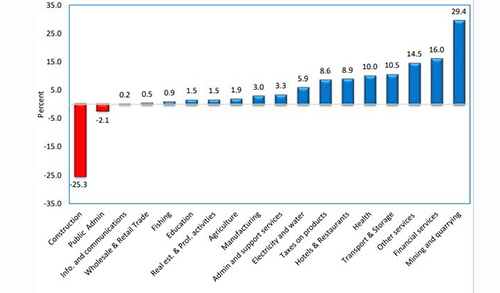Economic activities continue to unfurl, registering a positive outturn for five consecutive quarters since 2021.
Real gross domestic product (GDP) rose to 5.6% during the second quarter of 2022, relative to a growth of 5.5% posted during the same quarter of the preceding year.
Real GDP is a macroeconomic statistic that measures the value of the goods and services produced by an economy in a specific period, adjusted for inflation.
Essentially, it measures a country’s total economic output, adjusted for price changes.
Releasing economic statistics yesterday, Namibia Statistics Agency (NSA) CEO Alex Shimuafeni said the slight improvement in the domestic economy is attributed to improved growths in real value added recorded in agriculture and forestry (1.9%), mining and quarrying (29.4%), electricity and water (21.8%), transport and storage (5%) and health (6.8%) sectors when compared to the corresponding quarter of 2021.
In nominal terms, the size of the economy as measured by the nominal GDP expanded to N$48.6 billion up by N$5.4 billion when compared to the N$43.2 billion posted in the corresponding quarter of 2021.
Nominal GDP can be explained as the total market value of all goods and services produced in a country’s economy over a given period.
During the period under review, the manufacturing sector was the highest contributor to GDP at 12.1%, followed by wholesale and retail trade (10.2%) and agriculture and forestry (10%).
Shimuafeni added nominal value for exports of goods and services was N$16.3 billion up from N$13.3 billion that was recorded in the same period of 2021, a reflection of the increased output.
Similarly, the nominal value of imports for goods and services increased to N$25.5 billion in contrast to N$19.5 billion registered in the corresponding quarter of 2021, representing an increase of N$6 billion in the value of goods and services.
Overall, imports increased more than exports; thus, the country continues to experience a negative external balance.
The deficit is largely driven more specifically by the increase in imports of intermediary
goods.


